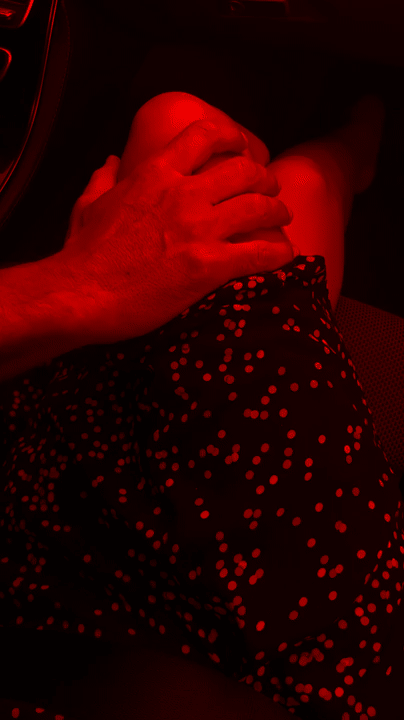#Black Editions
Explore tagged Tumblr posts
Text
3/24/24.
When I heard the first few seconds of "Ameagari", I assumed this was a reissue from Los Angeles based label Black Editions. Over the course of the past few years they've reissued Japanese music from High Rise, Hallelujahs and Nagisi Di Te - and these are only the LPs I bought.
An'Archives is another label (France) that reissues Japanese bands. And finally don't forget KiliKiliVilla.
But Niningashi "Heavy Way" is being reissued by British label Time Capsule. This has a groove that sounds current - like it could be Holy Hive or maybe Mac DeMarco. The Bandcamp page mentions a cross between Neil Young and Haruomi Hosono's Happy End.
Niningashi was the brainchild of pharmacist/musician Kazuhisa Okubo - who was based in Tokyo, Japan.
#Niningashi#Tokyo#Japan#Time Capsule#Black Editions#An'Archives#KiliKiliVilla#High Rise#Hallelujahs#Nagisi Di Te#Holy Hive#Mac DeMarco#Neil Young#Haruomi Hosono#Happy End#Kazuhisa Okubo#Bandcamp
8 notes
·
View notes
Text
Milford Graves, Arthur Doyle, Hugh Glover — Children of the Forest (Black Editions)

Children of the Forest by Milford Graves, Arthur Doyle, Hugh Glover
Drummer Milford Graves rarely recorded during his lifetime, and, until recently, most of his releases were long out of print. Corbett vs. Dempsey began to rectify that with key reissues of Bäbi, his trio with reed players Arthur Doyle and Hugh Glover, and The Complete Yale Concert 1966, his duos with Don Pullen. TUM records stepped in with Wadada Leo Smith’s Sacred Ceremonies, a 3 CD set including an incendiary duo with Graves along with a trio with Graves and bassist Bill Laswell. Since his death in February, 2021 Black Editions Archive has stepped up the game, digging in to Graves’ vaults, first with an issue of a trio set by Peter Brötzmann, Milford Graves, William Parker, and now, with Children of the Forest, a set of recordings captured in Graves’ Queens workshop with Doyle and Glover in the months leading up to the Bäbi session. The two-LP set documents a January 1976 duo session with Graves along with Glover on tenor saxophone, a brief drum solo from February of that year and a March trio session with Graves, Glover on klaxon, percussion and vaccine (a Haitian one-note trumpet) and Doyle on tenor saxophone and flute. The torrid rawness of these recordings looks toward the torrential barrage of Bäbi but brings out a more ritualistic edge to the playing.
Graves had spent his early years studying African drumming, tablas and playing timbales in Latin jazz bands and that sense of time, extended from African and Caribbean ceremonial music and ritual imbue these sessions. Hugh Glover talks about this and the time he spent with Graves, whom he refers to as Prof, in the extensive interview included with the LP set conducted by Jake Meginsky. “We were listening to the music of the peoples of the interior forest of the Congo… First, the Prof’s mood sets up a tribal-like atmosphere. It’s Congo-like — possession states. The rhythms, I think they immediately stimulated the need to dance… The next thing one must know and be aware of is that Milford Graves, he is not a time-keeping drummer like most jazz drummers. Prof represents the epitome of traditional hand drumming. I’m talking about ceremonial music and ritualistic sounds most familiar with divination.”
Hugh Glover only recorded a few times so the January duo session with him and Graves is a particular find. The first of the four improvisations starts out with the percussionist’s churning thunder, leading to the entry of the tenor player’s hoarse, braying cries. The two had known each other for a decade at that point and Glover had been part of a European tour of Graves’ quartet along with Joe Rigby and Arthur Williams. That symbiosis is immediately evident. There’s a fluid sense of polyphony and elastic polyrhythms at play as the two bound along with ebullient intensity. The music is charged with open, spontaneous interchange and while the intensity level is high, they never overpower each other. Graves’ percussion work is revelatory here, spilling across his kit with a limber, propulsive dynamism. One can hear the legacy of African and Latin American rhythms exploded out with the drummer’s lithe control of tuned skin and slashing cymbals, with masterful control of dynamics and timbre. The inclusion of a short, 2-minute recording from the session reveals their careful attention to detail as the two sound-check the room and their balance and then charge into a compact give-and-take. Their concluding 7-minute improvisation is a particular highlight as they ebb and flow with synchronous fervor.
The inclusion of a three-minute drum solo, recorded in February, is a brilliant addition to the set, particularly since Graves didn’t release any solo recordings until his two discs on Tzadik that came out in the late 1990s. On this 1976 recording, Graves distills his unified, multi-limbed attack into a roiling tempest of energy. Each thundering salvo, each cymbal crash, each resounding wallop of the bass drum is meted out with focus and intention. Glover remarks that listening to the solo recording he was struck by “the melody, and the melody of the tones that he gets, the way he rocks from one melody pitch to another. It has always been a mystery to me how Cuban drummers in Bata were able to modulate the rhythm and the meter. Well, it takes more than one player to do it Cuban style. Prof shows you can do it as one player.”
The three March improvisations with Graves, Glover, and Arthur Doyle provide a notable link in the trajectory toward the session recorded a few weeks later that would be released as Bäbi. Glover reminisces about the March session here, noting “When we played, though, Doyle and I, we weren’t thinking of BÄBI [a name Graves used for his conceptual approach to improvisation]. We were thinking of… well I know I was thing of, and I’m pretty sure he was thinking, how do we keep up with Prof!” While that may have been going through their minds, that uncertainty never reveals itself in their playing. Graves begins the 12-minute improvisation that opens the set with tuned cascades of rim shots and toms and the two quickly join in, with Doyle’s raspy tenor crying out against the shifting percussion. The modulating rhythms and meters of Graves’ solo are the foundation of the buzzing whorls that develop in three-way, spontaneous orchestration which never flags for a moment. The shorter second piece kicks off with an extended section of chattering drums, making way for the two partners to interject barking, ecstatic exclamations that mount with intensity as Graves hurtles in with clanging cowbell. The final piece is the most abstracted, with Doyle’s high-pitched flute skirling against the chafed yawp of Glover’s klaxon and Graves’ coursing flow. Here, improvisation and ritual are melded together with pelting focus.
Glover concludes his interview reminiscing that “It was like Prof was saying, there is no ensemble, there is no musical configuration that I can’t play with as long as I’m allowed to play what I want to play. In other words, his confidence factor was like, I know I have the essence of where any group wants to go. If they allow me to do my thing, I’ll take them there.” The sessions released on Children of the Forest are a fitting testament to that belief and provide a welcome addition to the documentation of the lineage of Graves’ musical legacy. Here's to hoping that Black Editions continues to mine the Prof’s archives.
Michael Rosenstein
#milford graves#arthur doyle#hugh glover#children of the forest#black editions#michael rosenstein#albumreview#dusted magazine#jazz#free jazz#eremite records
14 notes
·
View notes
Text

#photography#amazing#astethic#lovers#desire#romantic#love#passion#kiss#touch#relationship#reflection#connection#soulmates#affection#artists on tumblr#black and white#couple#couple goals#intimacy#intimate#bw#beautiful#edit#heartbreak#lovecore#breath#heartbeat
41K notes
·
View notes
Text

My edit
#my edit#bwphotography#bw#lovers#desire#connection#romantic#love#passion#kiss#touch#relationship#soulmates#affection#artist on tumblr#black and white#couple#couple goals#intimacy#beautiful#sexy and beautiful#lovecore
22K notes
·
View notes
Text

#edit: i’m sorry so many of u guys relate :(#girlblogger#girlblogging#lana del rey#hell is a teenage girl#this is what makes us girls#girlrotting#girl interupted syndrome#girlcore#lana del ray aka lizzy grant#lana del ray aesthetic#2014 tumblr#femcel#coquette girl#coquette#manic pixie dream girl#coquette aesthetic#black swan#coquette grunge#divine feminine#jennifers body#just girly things#sofia coppola#dollette
15K notes
·
View notes
Text

"Lesbian Weddings" by Wendy Jill York
source: The Femme Mystique, edited by Lesléa Newman
#lesbian literature#lesbian#dyke#thatbutcharchivist#archived#lesbian books#lesbian history#lesbian photography#black lesbian#black femme lesbian#black femme#black butch lesbian#black butch#stud lesbian#i pray i am using the term stud appropriately here#will edit if not#author: lesléa newman#year: 1995#publisher: alyson publications inc.#the femme mystique#photographer: wendy jill york#black lesbian couple#black couple#the gal on the left looks a little like my sister tsega ... i miss her so much 😭😭😭#femme4butch#femme4stud#butch4femme#stud4femme#femme#butch
33K notes
·
View notes
Text

#my edit#give credit#angelina jolie#this is a girlblog#coquette#yankee candle#precious moments#girl interupted syndrome#girlblogging#black swan#lana del rey#manic pixie dream girl#fawn posts#girlblog aesthetic#gloomy coquette#dollette#hell is a teenage girl#femcel#lana del ray aka lizzy grant#lizzy grant#directed by sofia coppola#lux libson#pinterest addict#tumblerina#pretty little liars#girl interrupted#lisa girl interrupted#cecilia lisbon
10K notes
·
View notes
Text

#photography#amazing#astethic#lovers#desire#romantic#love#passion#kiss#touch#relationship#reflection#connection#soulmates#affection#artists on tumblr#black and white#couple#couple goals#intimacy#intimate#bw#beautiful#edit#heartbreak#lovecore#breath#heartbeat
11K notes
·
View notes
Text
idk why ppl think megan is faking liking anime she was so right incels mad she’s a weeb and a baddie
#leave her aloneeeee#literally living her best life I love seeing all her little cosplays#EDIT: its important to recognize megan faces much more criticism and skepticism because she is black and also a woman!
14K notes
·
View notes
Text
#my edit#bw#bwphotography#lovers#desire#romantic#love#connection#passion#kiss#touch#relationship#soulmates#affection#artist on tumblr#black and white#couple#couple goals#intimacy#beaituful#sexy and beautiful#lovecore
5K notes
·
View notes
Text
7/2/23.
It's been about 4 years since we've posted something from French label An'archives. I love that you can find labels devoted to releasing Japanese music in all sorts of places around the world. Black Editions in Los Angeles, and First & Last Records in Brooklyn, are two other labels aside from An'archives that came immediately to mind.
Usurabi are from Japan (I can't figure out where they are specifically from), and are clearly influenced by both The Pastels and Tenniscoats. But the Bandcamp page also mentions David Roback/Kendra Smith (Opal), The Clean and The Chills.
And yes, this is really that good.
#Usurabi#Japan#An'archives#Black Editions#First & Last Records#The Pastels#Tenniscoats#David Roback#Kendra Smith#Opal#The Clean#The Chills#Bandcamp
9 notes
·
View notes
Text


whats wrong with my dog bruh 😂😭
#art#illustration#colored pencil#digitally edited quite a bit tho#black paper#horror#surrealism#unreality#this is what realistic quad fursuits make me feel like btw#no hate to ppl who make/wear/like them and theyre v impressive it just freaks me out#i think those kinds of fursuiters need to work in the film industry making practical effects for horror movies#like making a skinwalker or something similar#it looks like a dog at first glance but the way it moves isnt quite right and u realize its someone/something just mimicing a dog#animal uncanny valley to me
4K notes
·
View notes
Text

#photography#amazing#astethic#lovers#desire#romantic#love#passion#kiss#touch#relationship#reflection#connection#soulmates#affection#artists on tumblr#black and white#couple#couple goals#intimacy#intimate#bw#beautiful#edit#heartbreak#lovecore#breath#heartbeat
18K notes
·
View notes
Text

My edit
#my edit#bw#bwphotography#lovers#desire#romantic#love#connection#passion#kiss#touch#relationship#soulmates#affection#artist on tumblr#black and white#couple#couple goals#intimacy#beaituful#sexy and beautiful#lovecore
13K notes
·
View notes
Text

17K notes
·
View notes
Text

malleusified sebastian cause im yana toboso’s biggest fan
#black butler#twisted wonderland#malleus draconia#sebastian michaelis#in yana toboso we trust#my art#my edit
4K notes
·
View notes